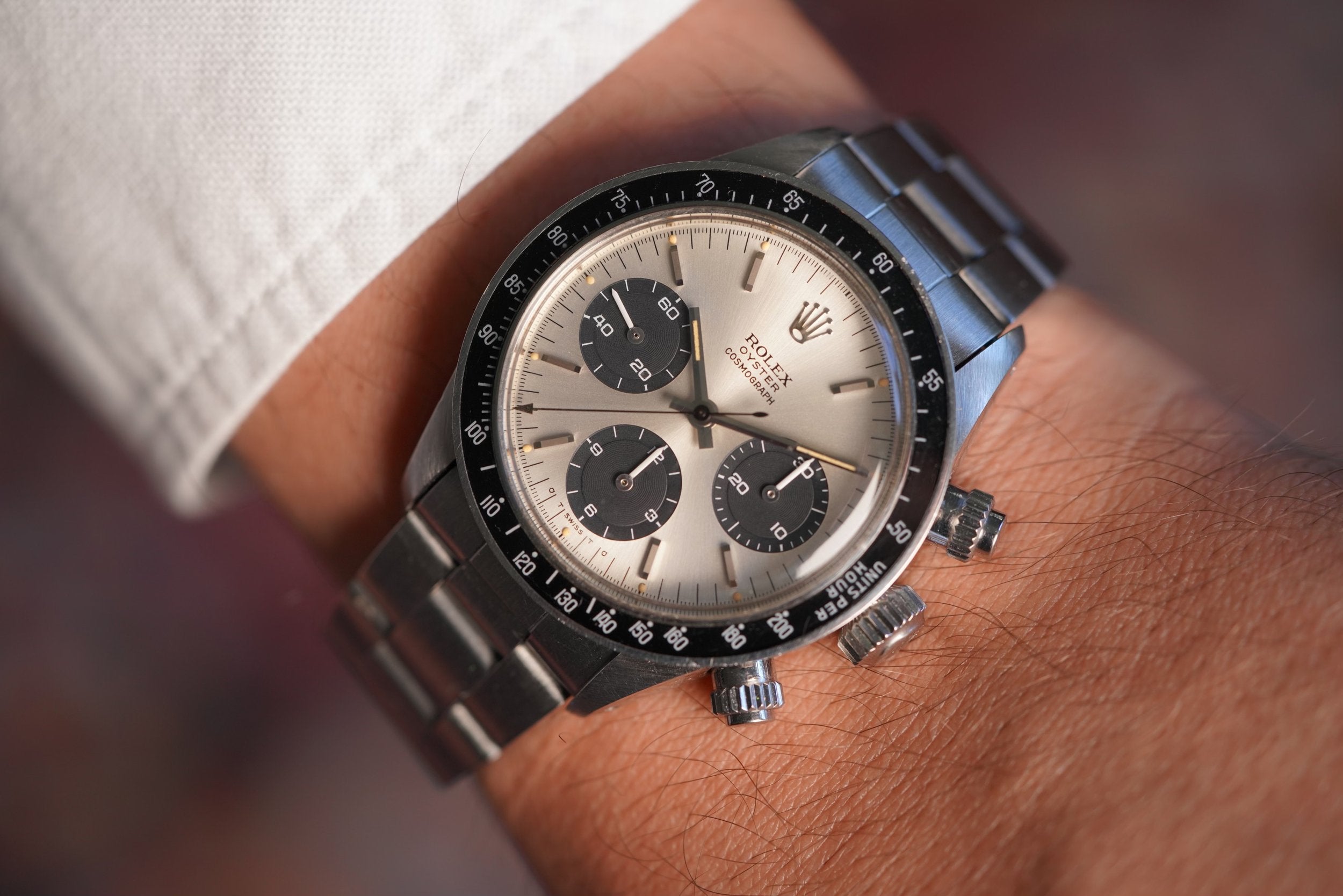Should You Polish Your Rolex?

You Should Not Polish Your Rolex
If you’ve spent any amount of time shopping for Rolex watches online, particularly vintage examples, you’ve probably seen the words “unpolished” or “sharp” in a few listing titles: not just descriptions, but titles. Why would a watch’s status as ‘polished’ or ‘unpolished’ be so important as to include it in the listing title?

Let’s take the Rolex GMT-Master 6542 (1954-1959) for example. This reference was produced in low quantities for only about five years before it was replaced by the ref. 1675. While an exact number is unknown, there are thought to be less than 5,000 examples of the Rolex GMT-Master ref. 6542 out there.
Of those ~5,000 watches, let’s say that half are broken beyond repair, lost, and/or disassembled. This is a conservative estimate given the watches’ 70 years in existence. Of the remaining ~2500 watches, let’s say that 2000 have been serviced, overhauled, or otherwise “repaired” somewhere down the line. This is yet another conservative estimate; most Rolex owners are at least vaguely aware that their watch should be maintained. Of those ~2000 GMTs that were taken in for service, effectively all of them were polished at least once. Historically, refinishing is a routine aspect of having your watch serviced.

Only with the proliferation of vintage watch collecting, auction coverage, and subsequent consumer knowledge has polishing become taboo (mostly in the past decade). This shift in consciousness is largely rooted in money, but begins with a debate of originality. Simply, an unpolished watch is closer to its original condition than if it were polished. Even if a polished watch looks “newer”, it has lost metal in the polishing process (yes, very little metal if done properly), and is therefore further from its original state. Continuing with our example, out of the ~300 GMT-Master ref. 6542 examples that are unpolished, the ten best examples are the ten best examples . . . of the ref. 6542 . . . period. These ten watches are closest to their original condition, and in the realm of collectibility, they are the most valuable (omitting provenance and other intangibles).
While not every Rolex reference is “historically significant”, every Rolex reference is (or someday will be) limited in quantity. The hyper-limited 6542 is an easy reference with which to visualize this “polishing funnel”, but the same math applies to any out-of-production watch. Unpolished examples of any discontinued Rolex reference become rarer by the day and remain closest to the watch’s original condition.
TL;DR: by not polishing your watch, you’re maintaining its originality, and in many cases, its monetary value.
You Should Polish Your Rolex (If you want to)
Hopefully, we can all agree that the utility of mechanical watches is obsolete. We own and wear these things because we want to, not because they are the best available, best-priced timekeeping devices. There’s an inherent romance associated with mechanical watch ownership, a romance that wins over technically-inferior timekeeping. Perhaps you were gifted a Rolex for your anniversary, maybe it was passed down by a parent, or maybe you just bought it because you liked it. Unless you purchased your Rolex with the intent of selling it for a profit — in which case I’d defer you to the previous section, “You Should Not Polish Your Rolex” — you should do whatever you want with it. 
At the end of the day, polishing your Rolex is a personal decision. We've all had a watch with a horrendous scratch, ding, or nick that we just can’t unsee; it’s maddening. If you’re unconcerned with your watch’s monetary value (and/or a near-imperceivable difference in its originality), why not get rid of that bothering blemish?
There’s a reason that Rolex (and most other brands) chooses to polish/refinish watches that come through their service centers. Rolex's goal is to bring your watch back to "like-new" condition. Often times, this means deviating from originality: replacing a dial, replacing a handset, polishing the case, etc. For more than a century, most Rolex owners didn't give these aspects of service (including polishing) a second thought. They just wanted their watch to look and perform as it did the day they took delivery. How can you blame them?
Rolex does an exceptional job refinishing their own watches (perhaps obviously). A number of watchmakers/craftspeople also do exceptional jobs, achieving the desired result without removing too much metal in the process. Having your Rolex refinished by an unqualified watchmaker (yourself or someone else) may result in uneven surfaces, wonky proportions, or other irreversible damage. I strongly advise leaving refinishing to experienced professionals.
Where I Land on the Matter

I hear both sides of the debate, but in my mind, polishing should be decided on a case-to-case basis (pun intended). In general, if you can stand the scratches, I think it’s worth keeping your Rolex as close to its original condition as possible. The older your watch gets without a refinishing, the more I’d advise you keep it that way. That said, if you can’t live with the scratches, and you don’t plan on selling the watch (or don’t mind taking a potential hit in its value), go ahead and get a proper refinishing. Lastly, if you have an unpolished vintage Rolex that could be described as collectible or historically significant, I personally urge you to keep it unpolished. There are only so many out there; keep yours original, if not to sell it, for the appreciation of future generations.









Leave a comment